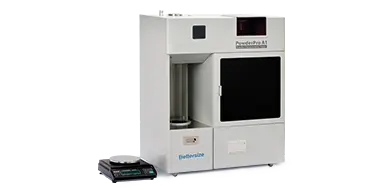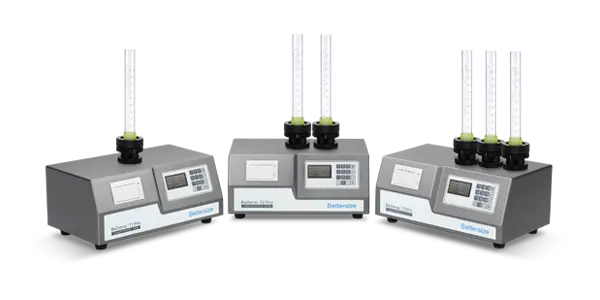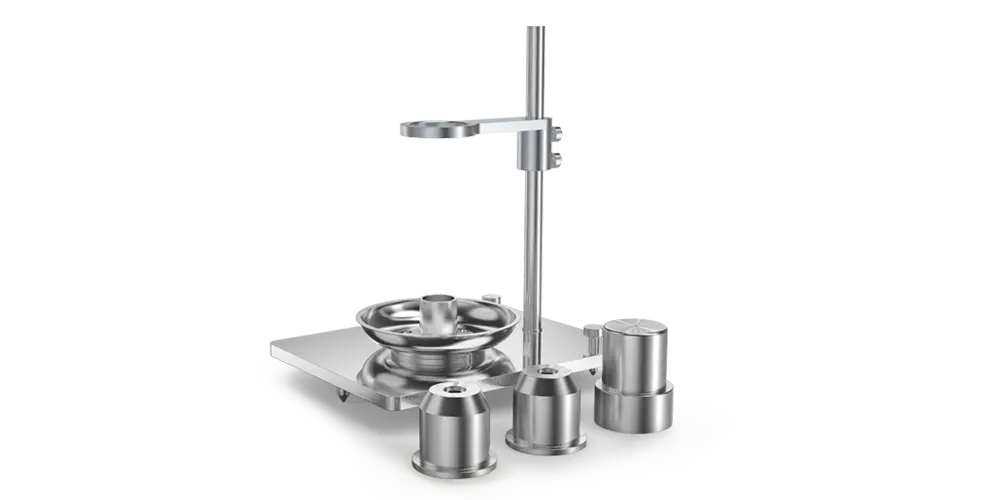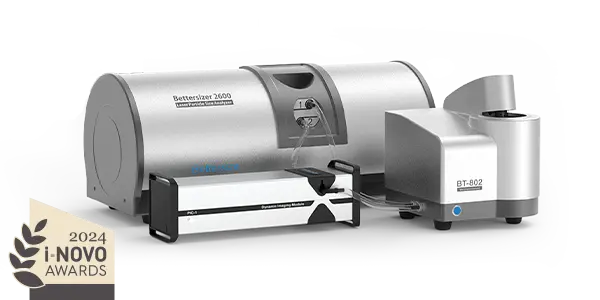Battery and Energy
Throughout human history, efficiently converting and storing energy have remained significant challenges. From the well-established lithium-ion battery technology to emerging advancements like sodium-ion, and graphene-based batteries, these energy storage solutions are proving increasingly reliable for a growing range of applications. Electric vehicles, peak and valley management of power grids – all these applications necessitate continuous progress in battery research, development, and production.
Bettersize is committed to supporting our customers in developing efficient, high-performing, and recyclable battery technologies. This commitment extends to assisting consumers in their smooth transition towards renewable energy storage solutions that utilize batteries. We offer a comprehensive range of analytical solutions, applicable across the entire battery development spectrum – from the widely used lithium-ion technology to emerging advancements like sodium-ion, lithium-sulfur, zinc-air, and graphene-based batteries. These solutions can be employed throughout the process, from initial research and development stages to real-world production applications.
By leveraging Bettersize's analytical tools, you can significantly expedite and simplify the analysis of granular materials, a critical component in battery performance. These tools empower you to gain a deeper understanding of key factors influencing battery performance, such as electrode materials and slurries. This knowledge enables you to optimize various aspects of battery development, readily identify the impact of these adjustments, and ultimately achieve optimal battery performance.
Particle Size Solutions
The particle size of electrode materials significantly impacts battery performance, influencing key metrics like output power, internal resistance, cycle life, and energy density. Battery electrodes, particularly lithium-based ones, are formed by coating a slurry containing these particles onto a conductive collector. As particle size affects the specific surface area, which in turn influences electrode reaction efficiency, it directly impacts output power. Additionally, particle size influences the efficiency of ion movement near the electrode, affecting internal resistance. Furthermore, changes in particle size during battery cycling contribute to capacity reduction and aging.
Therefore, measuring particle size is crucial for new battery development, performance optimization, and production. Ideally, frequent testing of raw materials, intermediate products, and finished goods throughout the production cycle ensures consistent product quality and adherence to design goals. Bettersizer series particle size analyzer, leveraging laser diffraction technology, offers a simple and accurate method for measuring particle size in both cathode and anode materials. It's noteworthy that some industry standards for lithium battery materials specify a maximum particle size (D100). Bettersizer S3 Plus, utilizing Bettersize's innovative laser diffraction-image combined particle size testing method, delivers accurate and reliable results for even large particles. This high sensitivity helps prevent quality issues arising from a small number of oversized particles.
Particle Shape Solutions
Particle shape in battery electrode materials also plays a critical role in performance, impacting safety, lifespan, energy density, and output power. Shape influences the flow behavior (rheology) of the electrode slurry. At equal material type and concentration, slurries with irregular particles exhibit higher viscosity compared to those with rounded particles. This can lead to uneven coating of the electrode, resulting in high localized charge density that compromises battery safety and lifespan. Additionally, particle shape affects the packing density and porosity of the electrode coating, both of which influence the battery's energy density and charge-discharge efficiency.
Therefore, analyzing and optimizing particle morphology is crucial for achieving high battery performance. BeVision Image Particle Size and Shape Analyzers offer rapid analysis of the size and shape of statistically significant particle populations, providing the critical information needed to optimize battery materials and processing.
Particle Density Solutions
Both the true density and powder density of electrode materials impact a battery's energy density. While a lighter battery is desirable, insufficient electrode material reduces the available cations (charged ions) and limits energy storage capacity. Therefore, maximizing the density of lithium battery materials through controlled synthesis and material selection is crucial for achieving high volumetric energy density. Additionally, batteries with higher electrode material density can maintain better capacity and power during high-rate charging and discharging, leading to slower capacity decay. The BetterPyc 380 pycnometer measures the true density of electrode materials, whether in powder or slurry form. Additionally, the PowderPro A1 automated powder characteristics tester and BeDensi T Pro series tap density tester can analyze the tap density of these materials.
Slurry Stability Solutions
The stability of electrode slurry is paramount in battery production. Stable slurries directly translate to easier processing and production of electrode plates, ultimately leading to higher and more consistent battery quality.
Composed of various components – electrode materials, conductive additives like carbon or graphene, binders, and solvents – the slurry's stability significantly impacts the quality of the electrode coating and the choice of production methods.
A critical factor is zeta potential. This property determines particle aggregation within the slurry. Particles with high zeta potential repel each other, forming stable dispersions. Conversely, particles with low zeta potential aggregate, leading to uneven coatings and ultimately, reduced battery performance. Zeta potential also affects the interaction between electrode materials and the slurry.
BeNano nanoparticle size and zeta potential analyzer address this challenge. It allows you to monitor and optimize the zeta potential of electrode materials, ensuring high-quality electrode coatings with excellent accuracy, repeatability, and consistency.
Citations
- Bettersizer 2600
Functional redundancy as an indicator for evaluating functional diversity of macrobenthos under the mussel raft farm near Gouqi Island
DOI: 10.1016/j.aquaculture.2023.740024 Read ArticleZhejiang Ocean University | 2024Biological traits analysis (BTA) helps to evaluate the effects of different environmental variables on the traits-based functional composition of macrobenthos. However, research on functional traits of macrobenthos under mussel farming is limited. We investigated the spatial and temporal response of the benthic system in terms of taxonomic and functional diversity to environmental variables of farming and natural stressors resulting from suspended mussel farming near Gouqi Island of eastern China Sea. The functional traits of macrobenthic assemblages under mussel farming were characterized by “medium adult body size”, “vermiform body form”, “high flexibility”, “infauna”, “semi-motile”, “gonochoristic”, “surface deposit-feeders”, “carnivores”, “semi-motile burrowers”, and “tube-dwellers”. Functional redundancy was stable in response to mussel farming stresses among seasons, whereas species diversity showed efficient to evaluate natural variables. Functional diversity was significantly affected by farming stressors rather than natural variables, Further analysis using multivariate methods together with continuous monitoring were highlighted to evaluate the impacts of mussel farming. Our results reinforce the importance of macrobenthic species and functional traits analysis to evaluate human stresses driven impacts in offshore ecosystems. By analysing the environmental variables with different sources, independently, we concluded the main effects of human pressures on macrobenthic community. Such distinction could be particularly effective to isolate variable environmental descriptors and evaluate their effects on functional diversity, making the current approach promising for the evaluation of ecological effects of anthropogenic stressors in aquaculture areas. - Bettersizer 2600
Degradation characteristics and utilization strategies of a covalent bonded resin-based solid amine during capturing CO2 from flue gas
DOI: 10.1016/j.seppur.2023.125621 Read ArticleChina University of Petroleum | 2024In this study, various types of degradation as well as attrition which are possibly encountered in a circulating fluidized bed temperature swing adsorption (CFB-TSA) process, were conducted experimentally to evaluate the stability of a resin-based solid amine sorbent. Other characterizations methods, such as elemental analysis (EA), Fourier transform infrared spectroscopy (FTIR) etc. were applied to further reveal the degradation mechanisms. The results showed that thermal degradation occurs from 140–160 °C due to the decomposition of amine group. The CO2-induced degradation occurs from a higher temperature of 160–180 °C accompanied by the production of urea. Hydrothermal stability is good below 130 °C, but the ionic impurities in steam crystalized on particle surface can accelerate the degradation. Oxidative degradation is the most harmful, which starts at a lower temperature of 70–80 °C with the formation of aldehyde. The existence of H2O in atmosphere can alleviate the oxidative and CO2-induced degradations. The employed sorbent has a very low attrition index of 0.05, which is 1–2 orders lower than typical commercial fluidized bed catalysts. Based on the results of stability evaluation, some design suggestions for proper utilization of this sorbent or other similar resin-based sorbents have been provided in an industrial CFB-TSA process.
- Bettersizer 2600
De-branching of starch molecules enhanced the complexation with chitosan and its potential utilization for delivering hydrophobic compounds
DOI: 10.1016/j.foodhyd.2023.109498 Read ArticleShihezi University | 2024The current study aimed to prepare the complexes between debranched-waxy corn starch and chitosan polymers (DBS-CS), and then investigated their corresponding structural characteristics, rheological property and potent application in Pickering emulsion. The results indicated that the existence of chitosan significantly inhibited starch short-range molecular rearrangement for all DBS-CS samples, which was manipulated by both debranching treatment and chitosan content. Interestingly, this is the first study to reveal that the outstanding peak at 1.8 ppm in 1H NMR spectrum for sample DBS-CS was gradually shifted towards a lower-field region following an increased chitosan content. Moreover, the debranching treatment shifted the crystallinity pattern from A-type to B-type and the relative crystallinity of DBS-CS decreased gradually with the increased content of CS. All samples had a pseudoplastic fluid and shear-thinning behavior with an enhanced shear resistance following the complexation. The DBS-CS was applied in a Pickering emulsion for showing a greater emulsifying stability and a lower gel strength than native NS-CS prepared emulsion. Importantly, the encapsulation ability of curcumin in the DBS-CS emulsion was significantly improved, followed by an increase of 15.45% for its corresponding bioavailability compared to the control. Therefore, this study might highlight a potential carrier for delivering the bioactive substances in a green pattern. - Bettersizer 2600
Heat-induced aggregation behavior of wheat gluten after adding citrus pectin with different esterification degree
DOI: 10.1016/j.foodhyd.2023.109420 Read ArticleGansu Agricultural University | 2024Wheat gluten aggregation during heat treatment is beneficial to the final quality of gluten-based products. Exogenous pectin can affect gluten aggregation. However, the effect of pectin with different degrees of esterification on the heat-induced aggregation behavior of gluten and its possible mechanism are still unclear. Thus, the heat-induced aggregation behavior of gluten after adding pectin with different esterification degree was studied in this study. When the temperature was raised from 25 °C to 95 °C, pectin affected gluten aggregation and was related to the degree of esterification. Specifically, the results of rheological properties and particle size indicated that low-ester pectin improved the viscoelasticity of gluten and promoted gluten aggregation. Thermal properties revealed that enthalpy of gluten added with low-ester pectin (37%) increased from 92.96 J/g to 95.40 J/g during heating process. Structurally, the fluorescence intensity and surface hydrophobicity of gluten added with low-ester pectin (37%) were lower than those added with high-ester pectin (73%). In addition, low-ester pectin (37%) significantly increased the disulfide bond content (from 15.31 μmol/g to 18.06 μmol/g) and maintained β-sheet content of gluten compared with gluten alone at 95 °C, indicating that low-ester pectin was more likely to induce gluten aggregation. However, scanning electron microscope showed that the gluten added with low-ester pectin (46%) exhibited a denser network structure at 95 °C than that added with low-ester pectin (37%). These results will provide a theoretical base for the regulation of gluten aggregation and the quality of gluten-based products by pectin with different esterification degree.
- 1
- 2
- 3
- 4
- 5
- 6
- 84
Curated Resources
- Application Note
 bigClick
bigClick2025-03-07
Stability Analysis of Electrode Slurries based on Static Multiple Light Scattering
- Application Note
 bigClick
bigClick2024-03-08
Optimize the Dispersion of Battery Materials for a Better Laser Diffraction Particle Size Test
- Application Note
 bigClick
bigClick2024-03-06
Exploring Particle Size Distribution in Silicon/Carbon Composite Anode for Lithium-Ion Batteries by Laser Diffraction
Related Particle Size Analyzer
-
PowderPro A1
Powder Characteristics Tester
Operation Mode: Automatic
Tapping Speed: 50 - 300 taps/min
Repeatability: ≤3% variation
-
BeDensi T Pro Series
Tapped Density Tester with a Wallet-Friendly Solution
Number of Workstations: 1-3
Tapping Speed: 100 - 300 taps/min
Repeatability: ≤1% variation
-
HFlow 1
Flowmeter Funnel
Measurement: Bulk density and Flow rate
Compliance with USP, Ph. Eur., ASTM, and ISO standards
-
Bettersizer 2600
Particle Size & Shape Analyzer
Measurement range: 0.02 - 2,600μm (Wet dispersion)
Measurement range: 0.1 - 2,600μm (Dry dispersion)
Measurement range: 2 - 3,500μm (Dynamic imaging)
-
BeScan Lab
Stability Analyzer
Particle size ranges from 10 nm to 1 mm
Volume fraction up to 95%
Compliance with ISO/TR 18811, 13097, 21357, 22107






